Today's post begins a new series of posts which will finish off my examination of the stamps and postal history of Lagos. I have completed my examination of the Queen Victoria issues, and so it is now time to look at the stamps of Edward VII's reign. Lagos amalgamated with Niger Coast Protectorate in 1906 and became part of Southern Nigeria, so stamps were only produced for three years during his reign, from 1904 to the end of 1906. They did continue to be used after amalgamation, right up to 1914, when Southern Nigeria joined with Northern Nigeria to become Nigeria as we know it today.
During this period, two stamp issues were produced, both exactly the same design and colours and differing only in terms of the watermarked paper used. The first issue which was placed on sale on January 22, 1904, was printed on paper with the single crown CA watermark that had been used on the previous Queen Victoria issue. The second issue, which appeared only 9 months later in October 1904, was printed on paper with a multiple crown CA watermark. Thus stamps of this first issue, are comparatively scarce compared to the second issue, and in postally used condition the higher values are rarities.
The 1d and 2.5d stamps were printed on coloured papers, with the paper of the 1d being red, and the 2.5d being blue.
There was only one printing of each value except the 2.5d, of which there were two printings. Consequently it is a relatively straightforward issue compared to the previous Victorian issues. However, there are still a number of interesting aspects to collect, and today's post will examine some of these aspects, with the remainder to follow next week.
The Basic Designs and Numbers Printed
The flaw, showing the clear, shorter stroke on the first N and the elongation of the second "N".
A normal stamp, showing the tops and bottoms of both "N's level.
The Short Y on the 2.5d Purple and Ultramarine
Next, we have a flaw in which the "Y" of "Penny is too short. Normally, the vertical stroke should come down to the same level as the bottom of all the letters. However, in this case , it is noticeably shorter than the other letters.
The scan below shows a pair from what would appear to be position 59 of the right pane, or position 119 of the sheet:
Below is a closer scan showing the flaw more clearly:

The flaw occurs on the upper left stamp in the above block. A close up scan is shown below:

When you compare the Y of the left stamp with the Y on the right stamp, you should be able to see that the Y appears to be distorted, while being shorter than the other Y.
This brings me to the end of this week's post. Next week I will look at cancellations on the stamps of this issue, and postal history.
During this period, two stamp issues were produced, both exactly the same design and colours and differing only in terms of the watermarked paper used. The first issue which was placed on sale on January 22, 1904, was printed on paper with the single crown CA watermark that had been used on the previous Queen Victoria issue. The second issue, which appeared only 9 months later in October 1904, was printed on paper with a multiple crown CA watermark. Thus stamps of this first issue, are comparatively scarce compared to the second issue, and in postally used condition the higher values are rarities.
The 1d and 2.5d stamps were printed on coloured papers, with the paper of the 1d being red, and the 2.5d being blue.
There was only one printing of each value except the 2.5d, of which there were two printings. Consequently it is a relatively straightforward issue compared to the previous Victorian issues. However, there are still a number of interesting aspects to collect, and today's post will examine some of these aspects, with the remainder to follow next week.
The Basic Designs and Numbers Printed
1/2d deep green and myrtle green.
Dispatched: March 12, 1903.
Issued: January 22, 1904.
60,000 stamps.
1d reddish purple and black on brick red.
Dispatched: March 12, 1903.
Issued: January 22, 1904.
210,960 stamps.
2d purple and ultramarine.
Dispatched: March 12, 1903.
Issued: January 22, 1904.
17,760 stamps.
2.5d Purple and ultramarine on grey-blue first printing.
Dispatched: March 12, 1903.
Issued: January 22, 1904.
24,720 stamps.
2.5d Purple and deep ultramarine on grey-blue, second printing.
Dispatched: July 30, 1904.
60,720 stamps.
3d purple and chestnut.
Dispatched: March 12, 1903.
Issued: January 22, 1904.
23,760 stamps.
6d plum and deep purple.
Dispatched: March 12, 1903.
Issued: January 22, 1904.
12,000 stamps.
1/- dull green and black.
Dispatched: March 12, 1903.
Issued: January 22, 1904.
9,360 stamps.
2/6d dull green and carmine.
Dispatched: March 12, 1903.
Issued: January 22, 1904.
1,440 stamps.
5/- dull green and ultramarine.
Dispatched: March 12, 1903.
Issued: January 22, 1904.
1,680 stamps.
10/- dull green and deep chocolate brown.
Dispatched: March 12, 1903.
Issued: January 22, 1904.
720 stamps.
The issue quantities for these are extremely low for a stamp issue from this period. Even the most common value, the 1d, was only issued in a quantity of about 200,000 or so. If 20% survived, which is being very generous, that is only 40,000 stamps. While that is common, it is not anything like hundreds of thousands or millions. The high values are exceedingly rare, especially used. Given the quantities shown here, and the low rates of survival for these more expensive stamps, it is doubtful that more than 200-300 would exist of the 2/6d and 5/- values, and maybe 100-150 of the 10/-. Of these 80-90% would be mint, and the rest would be used. Of this very small quantity of used stamps, only a handful will have survived with anything close to the original dull green colour, as the head plates were printed in doubly fugitive green ink. This ink fades first to blue green and then to greenish yellow when exposed to moisture.
Plate Layout and Sheet Markings
The use of jubilee lines to border the sheets, which was begun with the plate 2 printings of the Queen Victoria stamps, was continued into the current reign. The jubilee lines are not continuous, as the above scan shows. Rather, there is a small break where the perforations intersect the selvage. There is a very small curved ruler that fills in the space on the corners of the sheet. The plate number appears in a solid double circle, above positions 2 and 52 of the left pane, and positions 9 and 59 of the right pane. The sheets consisted of 120 stamps that would be split into 2 panes arranged side by side, that contained 60 stamps, arranged 6 x 10, just as they were for the previous Queen Victoria issue.
The side selvage is not perforated all the way through, but rather, there is a single extension hole beyond the first vertical row of perforations. The upper and lower selvage are perforated fully through.
.
Type Differences on the 2.5d
It would appear that the duty plates used to print the 2.5d value were the same as those used to print the previous Queen Victoria stamp, because the same size type differences that we saw there occur on this stamp. Only this time, the differences are, in my opinion, easier to see on this stamp, than they were on the earlier issue.
The scan below shows a close up image of both types:
The main difference between the two lies in the thickness of the numbers and letters. The larger type, is much thicker, and because of this, the corners of the letters and numbers are more rounded. The smaller type letters are much thinner, and the corners of the letters are square and sharp.
Inverted Watermark Varieties
De La Rue had very strict quality control procedures which required that the sheets of watermarked paper be fed into the presses in a consistent direction. Consequently, inverted watermarks are all very scarce to rare, and are always the result of an error. Very few of these were listed by Gibbons until recently, when more and more of them are being discovered for the first time by specialists, who never thought to look for them before. The only known denomination of this series, which exists with the inverted watermark is the 2.5d. It exists in both the large and small types, with the larger type being the scarcer of the two.
I have a really nice, mint never hinged example of the smaller letters with inverted watermark:
I took this fuzzy picture, showing the clear inversion of the watermark:
Specimen Overprints For Distribution to the Universal Postal Union
A very small number of stamps, being 727 of each value were overprinted "Specimen" for distribution to UPU members and various dignitaries. So, again, these are extremely scarce stamps in general. Each value is as scarce as the next too, although the catalogue value does not reflect this scarcity, either as a whole set, or for each value, compared to the normal stamps without overprint.
I have a complete set, as shown below. Note the broken "M" of "Specimen" on the 1d, and the fact that there appears to be no specimen overprint for the 2.5d with the larger letters of value.
Plate Flaws
Gibbons does not, as yet, list any plate flaws on this issue. However, this may simply be because virtually no colony had any such listings until relatively recently when Gibbons began including listings for constant plate varieties, and specialists began reporting them. They are not nearly as common as people think and this is why most of them list at over 100 pounds per flaw, and sometimes thousands of pounds. The reason for their rarity lies in the fact that (1) most were corrected after being discovered, (2) usually only 1 position in the sheet of 120 stamps is affected and (3) the issues involved had very low printings to begin with. For example, for a stamp that was issued in a quantity of say, 60,000 stamps, a flaw that occurs only once in a sheet of 120 stamps, only 500 could ever have existed and the number surviving today must be as low as 100, or possibly fewer stamps. So plating them is a challenge because for most of these issues there are no more complete sheets left that can be used to determine the exact position of the flaw.
In this issue, I have identified 6 potentially constant plate flaws. Two involve the 1/2d, one involves the 2d and three involve the 2.5d. Two of these are very similar, if not identical, to flaws that I have already discussed and documented on the Queen Victoria crown CA issue. This further supports the notion that at least some of these are indeed constant.
The Nicked N on the 1/2d Dull Green and Dark Green
This variety is the most minor of the three, but nonetheless, I belive that it is still worth noting. I call it the "Nicked N". Basically the second "N" of "Halfpenny" on the left stamp, has a small nick out of the top left, where the vertical and diagonal strokes meet.
A better view of this flaw is shown below:
The Elongated N's on the Halfpenny Dull Green and Dark Green
The next flaw that I have come across involves an elongation of the second "N" of Halfpenny, to the point that it almost touching the inner frameline of the value tablet. Normally, the N's should all be the same length. But with the variety. the N's are very different heights. and it creates a distorted effect, that is quite noticeable without a loupe:
The plate flaw occurs on the left stamp, which, from the width of the left selvage, suggests that this is position 1 of the sheet and left pane of 60 stamps.
Another view of the flaw, next to the normal NN of position 2 is shown below:
The Shaved N on the 2d Purple and Ultramarine
This flaw is one that I have encountered on the Queen Victoria Issue before. It involves the upper left side of the "N" of "Pence", which appears to have been shaved diagonally.
The left stamp in the scan below shows the variety, while the right stamp shows the normal "N".
It is an easy flaw to miss, but once you see it, it is really quite distinct, and it does stand out on a page.
The Truncated and Elongated N's on the 2.5d Purple and Ultramarine With Larger Letters
This flaw is similar to the one on the 1/2d, but in this case the first N of "Penny" has a short right vertical stroke, while the second N is elongated, almost touching the inner frameline around the value tablet.
The flaw is on the lower right stamp. Again, the deformity is quite striking compared to the uniformity of the NN's on the other three stamps in the block. Here is another close-up scan showing the flaw more clearly:
The flaw, showing the clear, shorter stroke on the first N and the elongation of the second "N".
A normal stamp, showing the tops and bottoms of both "N's level.
The Short Y on the 2.5d Purple and Ultramarine
Next, we have a flaw in which the "Y" of "Penny is too short. Normally, the vertical stroke should come down to the same level as the bottom of all the letters. However, in this case , it is noticeably shorter than the other letters.
The scan below shows a pair from what would appear to be position 59 of the right pane, or position 119 of the sheet:
Below is a closer scan showing the flaw more clearly:

The Deformed Y on the 2.5d Purple and Ultramarine
Lastly, we have a flaw that is very similar, that comes from position 1 of the left pane this time. The flaw consists of a "Y" that is both two short, and is also distorted in the sense that the angle at which the two diagonal strokes of the Y meet the vertical stroke is not uniform for both strokes, resulting in a distorted appearance.
The flaw occurs on the upper left stamp in the above block. A close up scan is shown below:

When you compare the Y of the left stamp with the Y on the right stamp, you should be able to see that the Y appears to be distorted, while being shorter than the other Y.
This brings me to the end of this week's post. Next week I will look at cancellations on the stamps of this issue, and postal history.


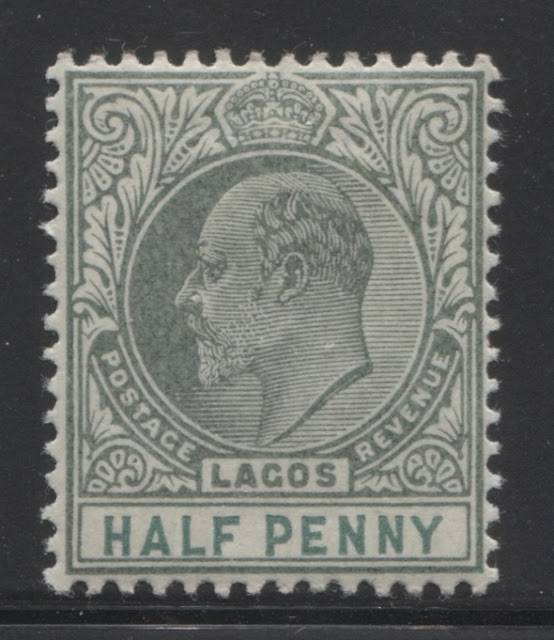


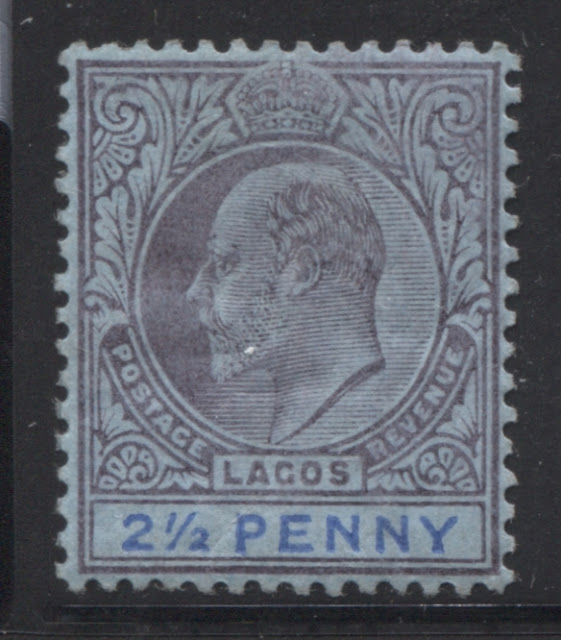
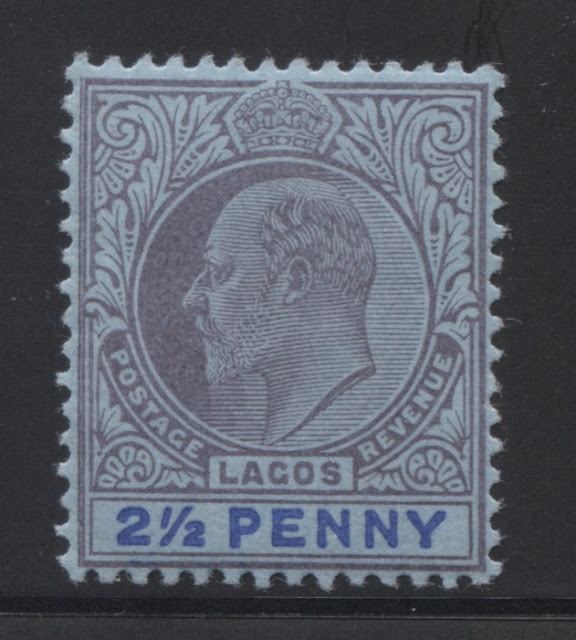





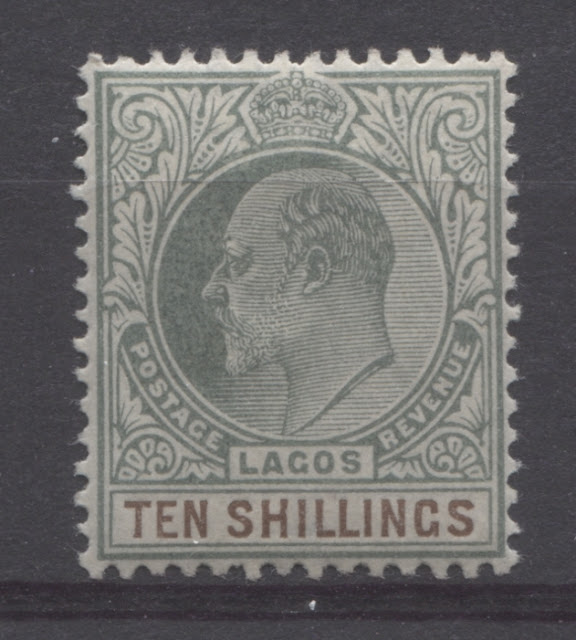
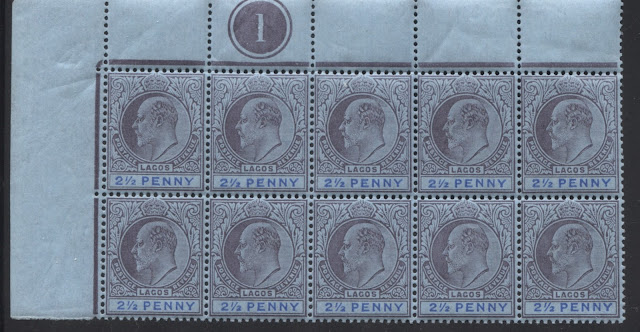


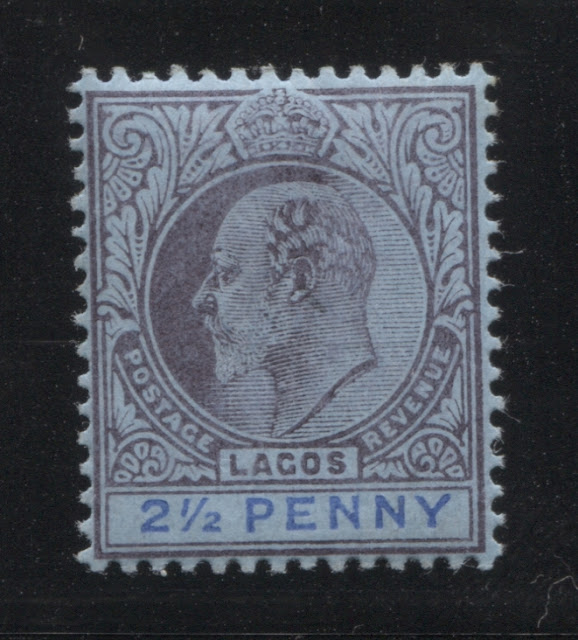

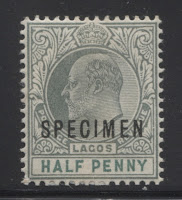
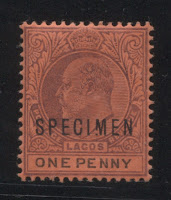
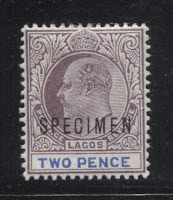
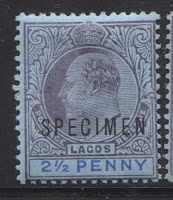

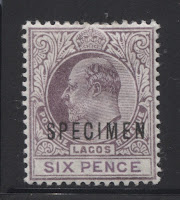
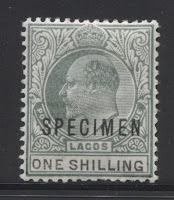
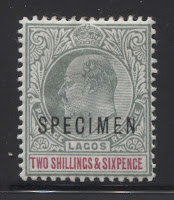








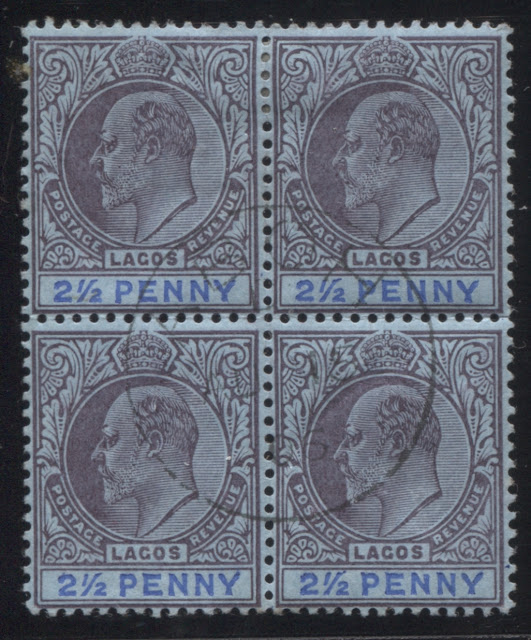




3 comments
http://hcialischeapc.com/ – cialis prescription
https://genericviagragog.com buy viagra
cialis 10 mg